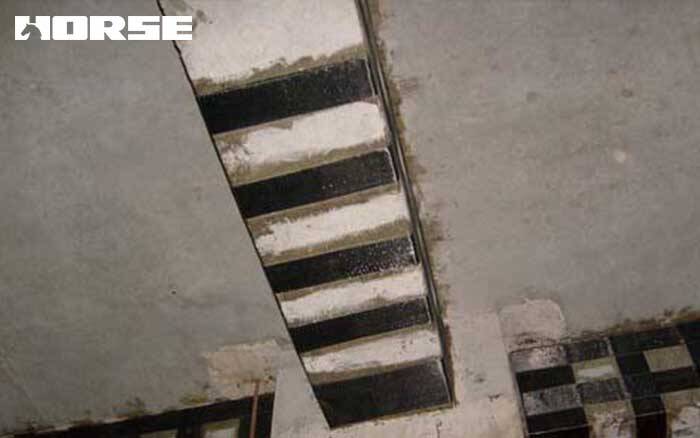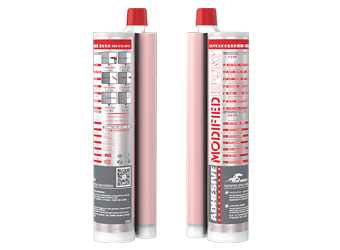Solutions
Horse Construction offers full range of structural strengthening materials with technical supports, documentation supports, products supports, project supports.
Analysis and practice of carbon fiber sheet in reinforcement of concrete structure

1 Comparison of structural strengthening reinforcement methods for concrete structures
For the walls, beams, columns, and floor slabs of the concrete frame structure, cracks and shedding of the walls occur, resulting in a decrease in the bearing capacity of the beams and columns, and when safety requirements are not met, the traditional reinforcement method is to remove the carbonized part of the surface. A layer of concrete is poured around the usable part of the entire wall, floor, beams and columns to form a protective wrapper, which is the "enlarged section reinforcement method." Or use section steel to reinforce the beams and columns, that is, the "external bonding steel method".
The enlarged section method can be used to strengthen beams and columns. However, this method has a long construction period and requires on-site support mold pouring. There are wet operations on site, which affects the normal use of the structure, and the increase in the cross-sectional area will reduce the building space. The externally bonded steel method is suitable for the reinforcement of masonry columns that do not allow to increase the cross-sectional size of the original member, but require a significant increase in the cross-sectional bearing capacity. However, the use of steel is larger, the reinforcement cost is higher, and it is not suitable for use in higher temperature or humid and corrosive environments, and protection measures similar to steel structures are required, and subsequent maintenance costs are higher.
The emergence of carbon fiber sheets makes the reinforcement of concrete frame workshops a better choice. Compared with the traditional enlarged section method and externally bonded steel method, carbon fiber sheet reinforcement is simple to construct, saves space, and has a long reinforcement life. At the same time, the construction operation environment and equipment requirements are simple, the construction quality is easy to guarantee, and the reinforcement cost is low. After the reinforcement is completed, the structural size and self-weight are not increased, and it also has good durability. Therefore, as a new type of reinforcing material, carbon fiber is more and more widely used in the reinforcement of building components.
2 Reinforcement scheme design and construction technology of carbon fiber sheet reinforced concrete structure
The carbon fiber with extremely high tensile strength is pre-impregnated with epoxy resin to become a composite reinforcement material. Then paste it along the tensile direction of the member or perpendicular to the direction of the crack to form a joint force member, so that the carbon fiber material and the original reinforced concrete can be stressed together. Increase the bending and shear resistance of the components, improve the strength, stiffness, and plasticity of the structure, and prevent further cracking of the components.
2.1 Reinforcement scheme design
To carry out a comprehensive reinforcement of a building, we must first carry out accurate measurements and accurately calculate the degree of damage to the walls, floors, beams and columns in the building. Analyze which parts need to be reinforced with carbon fiber materials and which parts only need basic maintenance and reinforcement. For example, the slightly damaged walls should be repainted for maintenance, while the severely damaged beams and columns should be reinforced with carbon fiber sheets. Secondly, it is necessary to accurately analyze the damage degree of different positions of the entire frame, such as the damage of frame beams, frame columns, and beam-column joints, to comprehensively design the specific use methods of carbon fiber materials. For example, two layers of carbon fiber sheets can be pasted on the bottom of the frame beams, and then the carbon fiber cloth can be pasted in a longitudinal and U-shaped pasting method to further improve the frontal flexural bearing capacity and slope bearing capacity of the beams and columns. At the same time, the tensile strength of the beam and column can be enhanced, and the further increase of cracks can be effectively curbed.
2.2 Construction technology and operation points of carbon fiber sheet reinforcement
The technological process can be summarized as follows: positioning and laying-off, construction preparation, concrete surface treatment, coating of bottom resin, pasting of carbon fiber sheet, coating of fabric, curing and curing, completion acceptance.
3 Case application of carbon fiber sheet reinforcement
The original three-story teaching building with a frame structure in the middle school has a total construction area of 3100 square meters. The concrete strength levels of each layer are as follows: the horizontal columns are all C30, the slabs are C25, the foundation is an independent foundation under the column, and the foundation is buried in depth of 2.2m. The teaching building was completed in 2002 and put into use. Now due to functional needs, it is planned to add a floor to the original structure as a reading room for students and teachers.
According to the current method of adding storeys and structural reinforcement, the school's proposed construction plan is: The newly added storey column reinforcement adopts drilling and planting technology to directly lead the reinforcement from the original column node position. The method of increasing the cross-section of the bottom column is adopted, that is, by increasing the cross-sectional size of the original member, to achieve the purpose of improving the bearing capacity. The three-layer beam of the original structure is reinforced by pasting carbon fiber sheets.
Choose HM-30 series carbon fiber sheet, its technical parameters are: single layer thickness = 0.167mm; elastic membrane E = 2.30 x 105Mpa.
After the above buildings have been added and reinforced according to the above construction technology, they have been put into use. After inspection and observation, the frame columns have no obvious signs of deformation or damage, and the reinforcement treatment effect is good, which can meet the requirements of structural safety.
4 Conclusion
The concrete members reinforced by carbon fiber sheets have the excellent mechanical properties, waterproof performance, resistance to natural temperature differences, and strong alkali resistance of ordinary concrete, and it also has the advantages of dimensional stability. Because carbon fiber material is lighter, it can also reduce the weight of the building without increasing the load on the original building foundation due to reinforcement. At the same time, the use of carbon fiber materials can also reduce the construction period and save reinforcement costs. The advantages of carbon fiber sheet reinforcement technology compared with other reinforcement technologies will enable carbon fiber sheet reinforcement technology to be more widely used in the reinforcement of concrete structures.
You can find anything here you are in need of, have a trust trying on these products, you will find the big difference after that.

High strength carbon fiber reinforced polymer (CFRP) strip / laminate / plate for structural strengthening and concrete repair

High strength, unidirectional carbon fiber sheet pre-saturated to form a carbon fiber reinforced polymer (CFRP) sheet used to strengthen structural concrete elements.

Two-components modified epoxy resin adhesive, with high quality plastic tube, double cartridge package for anchoring